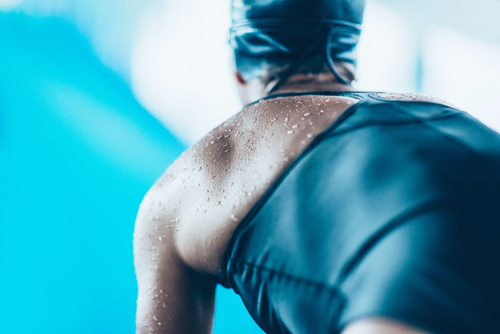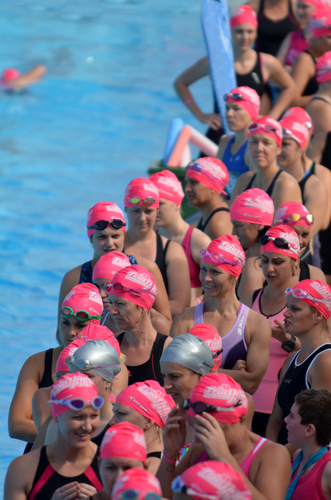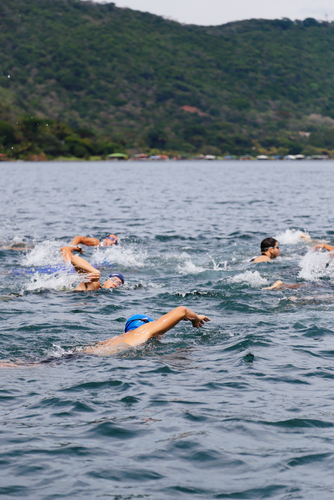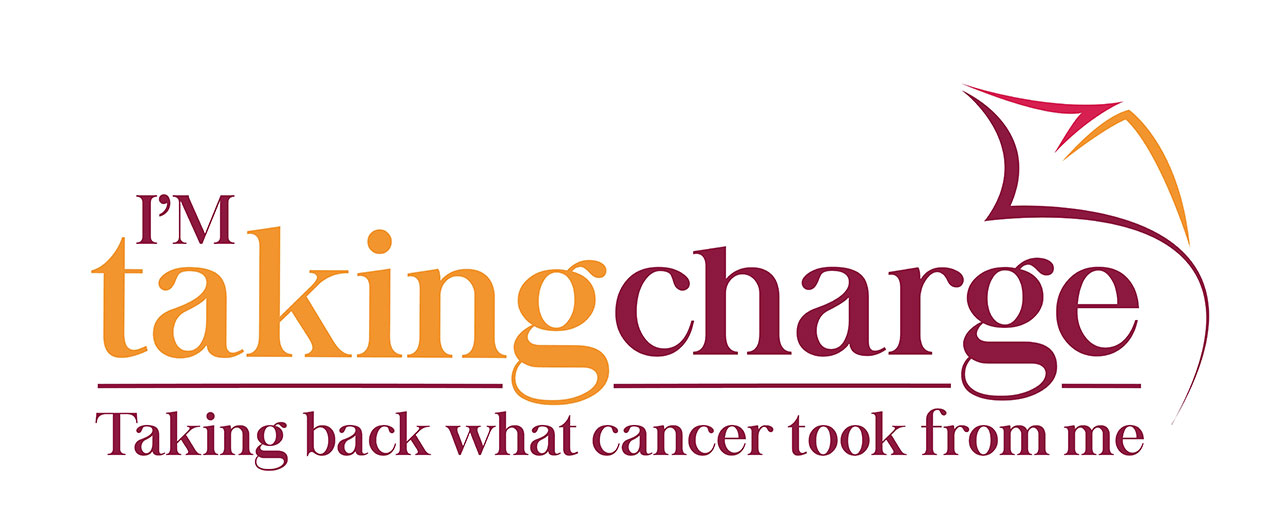What an amazing month it’s been for the US Olympic swim team! Looking for some inspiration? Check out Simone Manuel. She made history as the first black woman to win not only one, but two individual gold medals. Look to gold medalist Katie Ledecky (called the “greatest athlete in the world by far” by a Mayo researcher). Her unbelievable endurance makes other Olympic swimmers look like amateurs. Consider Dara Torres’ Olympic career, which spanned twenty years. The 49-year-old joked about trying out for Rio. However, she is still an inspiration to the over-40 crowd, having won an Olympic medal at age 41. These women are very visible fitness role models, but across the US there are other less visible role models: determined women who are embracing swimming after mastectomy and/or breast reconstruction.
Today we’re sharing an interview with a swimmer who returned to the sport after a mastectomy. Like Nicole, Arlene, and Karen (all competitive swimmers who returned to the pool after mastectomy and/or reconstruction), she found the exercise to be helpful for healing. Here she shares her experience. She also offers advice for anyone interested in swimming after mastectomy, whether for competition, fitness, or fun.
Interview: Swimming After Mastectomy

Kim (name changed for privacy) is a physician, lifelong swimmer, and member of the US Master’s Swimming organization (USMS). The USMS is an organization of thousands of people over age 18 who enjoy swimming. Some do it just for fun, and some practice for competitions. Diagnosed with early stage breast cancer several years ago at age 49, Kim had a mastectomy and opted not to reconstruct.
ITC: Why did you choose mastectomy?
Kim: I chose mastectomy for early stage disease because (1) I already have small breasts so the cosmetic difference after surgery is relatively minimal, (2) I didn’t want the uncertainty of possible future recurrence in that breast (although early stage, my cancer was high grade) and (3) I didn’t want radiation therapy (which I would have needed if I chose lumpectomy), not only because of the extra time for treatments, but also to avoid additional scarring from RT (I was less concerned with cosmetic result and more concerned with tissue fixation and loss of mobility for my swimming).
ITC: What about reconstruction?
Kim: I chose no reconstruction at this time. My surgeon did convince me to have a “skin-sparing” mastectomy, in case I decided to get implants in the future. We did discuss reconstruction: I would want to preserve muscle strength and mobility (for swimming) so tissue flap-type reconstructions (which usually use your lats or abdominal muscles) were ruled out. I didn’t even want implants (usually placed under your pecs, with of course additional recovery time needed).
Again, being small-breasted made the above decisions easy for me; I suspect larger-breasted women would have more difficult decisions weighing the pros and cons of their options. Also, I did not need RT nor chemotherapy, so can’t comment personally on those experiences.
ITC: Please comment on your healing process and therapy.
Kim: As a lifelong swimmer and with “good genes” (up to my diagnosis of breast cancer anyway), I am of “healthy weight” and “cardiovascular fitness,” both of which I’m sure helped get me through surgery and recovery relatively smoothly and quickly. With no need for adjunct treatment after surgery, I only had to wait until my incisions were healed and drains removed, before I was back in the water, about a month.
Before I started swimming again, I was doing mobilization exercises given to me by my physical therapist and by my lymphedema therapist (see below). When I started swimming again, my arm mobility was limited, making reaching my arm for (freestyle) strokes quickly fatiguing. With continued swimming as tolerated, and physical therapy, I would say I regained full mobility and strength several months, but less than a year, after surgery.
Since I had axillary node biopsy, I was at risk for lymphedema (patients who have nodes “dissected” because of tumor spread would have even greater risk). My surgeon takes a pre-emptive approach to lymphedema, having his lymphedema therapist check for early arm swelling and giving early treatment if needed. I also made a point of requesting PT to help regain mobility, and was sent to a therapist who works in conjunction with the lymphedema therapist and has experience working with both mastectomy patients and “regular sports injury” patients, so they understood my dual concerns from surgery and to regain function for my sport. Perhaps I should not have been surprised to find that many of my PT exercises were similar to ones I had previously done when I had rotator cuff problems (from swimming of course).
I should note that when I say “mobility,” I mean full range of motion for swimming, and not just the motion of “activities of daily living”.
My lymphedema therapist considers swimming one of the best activities for “treatment” (they offer pool based treatment sessions, but when they found out that I already swim, they said just keep doing that!). Not only your muscle contractions, but also the water flowing over your arm, is considered helpful in reducing lymphedema. Even when I wasn’t able to swim much distance, I was getting in every day just to get the effect from the water.
(Kim also found several useful videos on Youtube by the Michigan State University rehab dept on lymphatic massage and on post mastectomy exercises, which are similar to these from the Sloan Kettering Cancer Center.)
ITC: Do you have any swimwear tips for women who want to hit the pool following a mastectomy?
Kim: For swimming, I wear regular practice suits but choose patterns (not solids or stripes) to help “hide” my asymmetry. I don’t compete in “fast suits”, so don’t have any helpful hints there, sorry!
On land, I wear sports-type bras with removable cups. I replace the cup on my mastectomy side with a foam breast form. Insurance would pay for an external silicone breast form (for patients with larger or heavier breasts, trying to balance their mastectomy side with their remaining breast, if they are not having reconstruction [yet]).
[Note to Readers: Many of our readers have also found Knitted Knockers to be a comfortable, lightweight alternative to silicone breast forms.]
Thank you, Kim, for sharing all of this helpful information. It is so good to know what to expect when considering swimming after mastectomy!
Kim also mentioned a support organization that she herself hasn’t used, but that she has heard good things about: Imerman Angels. On a related note, I found an organization that helps female cancer survivors to reach their fitness goals, large or small: Team Survivor. Check them out to see if there are any chapters in your area.

Australian women participate in Triathlon Pink. It’s an Australian sporting community event for women raising funds for charities who provide breast cancer support and research.
Are you thinking of swimming after mastectomy or reconstruction?
I asked a few members of USMS for their advice to someone who wants to either return to swimming or begin swimming with a Masters swimming group after mastectomy. Here are their comments:
- 99.99% of adult swimmers do not care what the body of another person looks like.
- Swimmers just want you to show up, have fun, and if we’re lucky get a bit of competition.
- USMS practices are led by professional swim coaches and experienced adult swimmers.
- The first few weeks are the hardest, but you will be amazed at how you progress.
- I may feel self-conscious about my body fully clothed, but never when swimming.
- The water is and always should be a safe space.
- Society may be fixated on a certain look in a swimsuit, but swimmers are not.
- Masters swimming is more fun that I had imagined. The people are so kind.
 As a Masters swimmer, I completely agree with those comments. The highlight of my week last week was when I joined our local Masters/triathlon group to do a lake swim across a beautiful lake near our town. The swimmers ranged in age from an 11-year-old daughter of one of the Masters swimmers to a few men and women that were probably older than her grandparents. I’m not sure if any of them have suffered from breast cancer or mastectomy, but one of the more active members is a man who overcame a terrible biking accident in which he broke many ribs and his legs, and had to have vertebrae fused. He now participates in triathlons and is an inspiration to me and others. Look to your local pool, and you may also find such inspiration and encouragement.
As a Masters swimmer, I completely agree with those comments. The highlight of my week last week was when I joined our local Masters/triathlon group to do a lake swim across a beautiful lake near our town. The swimmers ranged in age from an 11-year-old daughter of one of the Masters swimmers to a few men and women that were probably older than her grandparents. I’m not sure if any of them have suffered from breast cancer or mastectomy, but one of the more active members is a man who overcame a terrible biking accident in which he broke many ribs and his legs, and had to have vertebrae fused. He now participates in triathlons and is an inspiration to me and others. Look to your local pool, and you may also find such inspiration and encouragement.
If swimming isn’t your thing, but you’re looking to start building a healthy lifestyle, visit our Anti-Breast Cancer Food & Fitness. You may also want to read Exercising After Breast Cancer: Myths vs. Facts.



![Sorting Body Image Issues After Breast Cancer [Podcast Ep. 23]](https://imtakingcharge.com/wp-content/uploads/2018/07/shutterstock_1062595838-500x383.jpg)
![Against the Grain: A Young Mom’s Mastectomy Without Reconstruction [Podcast Ep. 20]](https://imtakingcharge.com/wp-content/uploads/2018/06/Optimized-tim-marshall-57665-unsplash-500x383.jpg)

![Breast Cancer Nutrition From a Dietitian Survivor [Podcast Ep. 17]](https://imtakingcharge.com/wp-content/uploads/2018/03/Optimized-img-0573-561-500x383.jpg)
Wonderful article, Sally! I told my surgeons the same, function over vanity. I was supposed to have an implant placed during the same surgery as the mastectomy, but I had a tear in my outer skin near a lumpectomy scar. So I woke up with a tissue expander. Ugh.
I’m not a ‘swimmer’ perse, but just being in my neighbor’s pool and doing a bit of stroking and floating is the highlight of my summer at age 73. The plastic surgeon says ‘no swimming’ this summer. Very depressing indeed. I shall investigate more.
The drain was removed yesterday. The expansion will be finished in the next two weeks; I too have small breasts and never thought I would be so thankful for them being small. My heart goes out to women with larger breasts trying to balance a one-sided mastectomy.
All I want now is not to have to wear a bra for the rest of my life! Freedom.
I dream of floating in that pool and gazing at the sky . . . Instead I just walked less than a mile with my dog Chloe, my exercise motivator. How would we survive without dogs and cats! I never want to know.
Love your attitude!
Hi Vedura! Thanks for the compliment!! I’m so glad you appreciated the article. I am a swimmer myself and had a terrible time recovering from a c-section, and wasn’t able to go swimming for about 5 months, so I can relate to the frustration of having to wait. I’m so glad you have Chloe! At least she is benefitting from your hiatus from the pool. Here’s to a fast recovery!! Any exercise you can get is SO helpful!!
Inspirational read! I had a mastectomy nearly six weeks ago & being a Swimming, Aqua & Rehab Instructor, I have missed my classes & being in the sea & pool swimming. I saw my surgeon a few days ago & I am now allowed into the pool! I am working on getting back full range of motion – so much easier in the water where I am comfortable – it has been my happy place for most of my life! I found this site today & was so encouraged – thank you